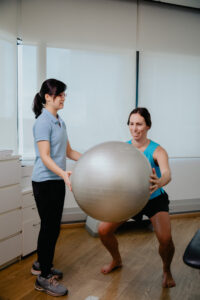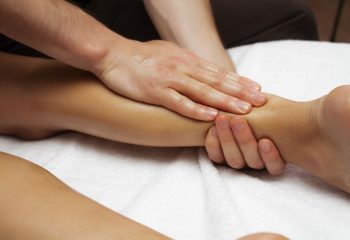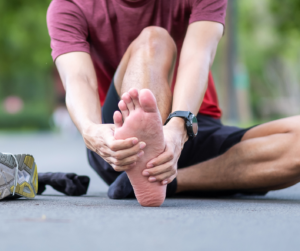When it comes to pelvic pain, it’s an issue that can affect anyone, yet it often remains hidden in the shadows of discomfort and embarrassment. If you’re one of the many individuals grappling with pelvic pain, you’re not alone, and there is help available. In this blog post, we’ll delve into the world of pelvic floor therapy, an effective and often under-appreciated treatment option that can provide much-needed relief. Let’s get started by understanding what causes pelvic floor problems and their effects.
What is the pelvic floor?
Before delving into therapy, let’s start by understanding what the pelvic floor is and why it’s so crucial. The pelvic floor is a group of muscles and connective tissues that form a hammock-like structure at the base of your pelvis. It plays a vital role in supporting various organs, including the bladder, uterus, and rectum. It also plays a crucial role in controlling bowel and bladder functions.
What are some symptoms of pelvic floor dysfunction?

Pelvic floor dysfunction occurs when these muscles become weak or overly tense, leading to a range of uncomfortable symptoms. Some common signs of pelvic floor dysfunction include:
- Pelvic pain: A persistent, dull, or sharp pain in the pelvic region.
- Incontinence: Involuntary leakage of urine or faeces.
- Constipation: Difficulty passing stool or a feeling of incomplete bowel movements.
- Painful intercourse: Discomfort or pain during sexual activity.
- Pelvic organ prolapse: A feeling of pressure or fullness in the pelvic area.
These symptoms can significantly impact your daily life, but there are effective treatment options available.
What are the common causes of pelvic floor dysfunction?
To comprehend how pelvic floor therapy can come to your rescue, it’s essential to grasp the root causes of pelvic floor problems. These issues can arise from various sources, including:
- Childbirth: The process of childbirth, particularly vaginal delivery, can place immense strain on the pelvic floor muscles, leading to injury or dysfunction.
- Chronic constipation: Straining during bowel movements over a prolonged period can weaken the pelvic floor muscles, resulting in pain and discomfort.
- Aging: As we age, the muscles in our body, including those in the pelvic floor, tend to weaken, making them more susceptible to dysfunction.
- Obesity: Excess weight can add extra pressure on the pelvic floor, leading to dysfunction and pain.
- Surgery: Certain surgical procedures, such as hysterectomies or prostate surgeries, can impact the pelvic floor.
- Injury: Trauma to the pelvic region, whether from an accident or surgery, can cause pelvic floor dysfunction.
- Genetics: Some individuals may have a genetic predisposition to pelvic floor issues.
What is pelvic floor therapy?
Pelvic floor therapy, also known as pelvic physiotherapy, pelvic floor physical therapy or pelvic rehabilitation, is a specialised form of physical therapy focused on strengthening and rehabilitating the muscles of the pelvic floor. These highly trained therapists employ a combination of techniques to address pelvic pain and dysfunction.
How can pelvic floor therapy relieve pelvic pain?

Pelvic floor therapy is all about restoring harmony and function to your pelvic region. Here’s how it works:
- Pelvic floor assessment: Your therapist will start by evaluating the strength and flexibility of your pelvic floor muscles. This assessment helps them understand the specific issues you’re facing.
- Tailored pelvic floor exercises: Based on the assessment, your therapist will develop a personalised exercise plan to target your unique needs. These exercises often include Kegels and stretches designed to strengthen and relax the pelvic muscles.
- Manual therapy: Hands-on techniques like massage and myofascial release may be used to alleviate muscle tension and promote blood flow.
- Ultrasound therapy: Ultrasound produces heat and vibration in the affected area, which helps reduce inflammation and stimulate circulation. This can increase the delivery of oxygen and nutrients to the tissue, helping it heal faster.
- Education: A crucial aspect of pelvic floor therapy is patient education. You’ll learn about your condition, the pelvic floor muscles, and how to maintain their health.
What to expect during your first pelvic floor therapy session at City Osteopathy & Physiotherapy?
Your first session will involve a thorough assessment by our experienced pelvic floor therapist, Yip Wan Hui. You’ll discuss your medical history, symptoms, and any concerns you may have. She will then perform a physical assessment to evaluate the condition of your pelvic floor muscles.
Once all the necessary information has been gathered, a tailored plan to address your specific needs will be created. This may include a combination of exercises, manual therapy, and education about your condition.
Book a consultation with us to discover our techniques to support your pelvic healing journey!
How long does it take to see results from pelvic floor therapy?
The timeline for experiencing relief from pelvic floor therapy can vary depending on the severity of your condition and your commitment to the recommended exercises and treatments. Many individuals start noticing improvements within a few weeks, while others may require several months of consistent therapy.
Unlocking comfort: The road to pelvic pain relief with pelvic floor therapy

Pelvic floor therapy offers a ray of hope for individuals grappling with pelvic pain. Understanding the causes, effects, and treatment options can empower you to take control of your pelvic health. If you’re experiencing pelvic pain, don’t hesitate our physiotherapists for professional guidance and support on your journey to relief and improved quality of life.
FAQs
What role does nutrition play in pelvic floor rehabilitation?
Nutrition plays a significant role in supporting pelvic floor health. A balanced diet that includes adequate fiber can help prevent constipation, a common contributor to pelvic floor dysfunction. Staying hydrated is also crucial to maintain healthy muscles.
Are there alternative therapies for pelvic floor disorders?
Yes, there are alternative therapies such as acupuncture and yoga. However, the effectiveness of these therapies may vary from person to person. It’s essential to consult with a healthcare professional to determine the best approach for your specific condition.

Are men and women equally susceptible to pelvic floor issues?
While pelvic floor problems are more commonly associated with women due to factors like childbirth, men can also experience pelvic floor dysfunction. It can result from surgery, trauma, or age-related muscle weakening.
Tip: Find out more about the men’s pelvic health issues that we can treat with physiotherapy!
How to prevent recurrence of pelvic floor problems after therapy?
To prevent recurrence, it’s crucial to continue practicing pelvic floor exercises even after therapy. Maintain a healthy lifestyle, manage weight, and address any contributing factors like chronic constipation promptly. Regular follow-up appointments with your physiotherapist also help monitor your progress and make necessary adjustments to your treatment plan.
What are some pelvic floor exercises that I can do at home?
While working with a pelvic floor therapist is invaluable, there are exercises you can do at home to complement your therapy sessions. Here are a few simple yet effective pelvic floor exercises:
- Kegels: These involve contracting and relaxing your pelvic floor muscles. Practice by squeezing as if you’re trying to stop the flow of urine, hold for a few seconds, and release. Repeat several times.
 Bridge pose: Lie on your back with your knees bent and feet flat on the floor. Lift your hips off the ground, engaging your glutes and pelvic floor muscles. Lower your hips and repeat.
Bridge pose: Lie on your back with your knees bent and feet flat on the floor. Lift your hips off the ground, engaging your glutes and pelvic floor muscles. Lower your hips and repeat.- Deep squats: Stand with your feet shoulder-width apart and squat down as if you’re sitting back into a chair. Keep your back straight and engage your pelvic floor muscles.
- Pelvic tilts: Lie on your back with knees bent. Gently tilt your pelvis upward, flattening your lower back against the floor. Hold for a few seconds, then release.
- Balloon breathing: Imagine your pelvic floor as a balloon. Inhale deeply, allowing your pelvic floor to expand like a balloon filling with air. Exhale and visualise the balloon deflating.
Incorporating these exercises into your daily routine can contribute to improved pelvic floor health.










